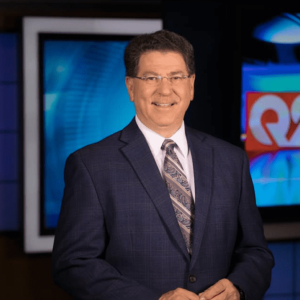Fewer than 1,000 pilots have ever soloed at the controls of a U2 Spy plane.
One of them lives outside of Livingston, Montana.
"You literally feel like you're on top of the world," said retired Air Force Colonel Ed Walby. "You can see the curvature of the earth. You can see stars during the day."
Capable of cruising at 60,000 to 70,000 feet, the U2 could operate at the edge of space, beyond the reach of the Soviet systems. During the early years of the Cold War in the 1950s, high resolution photographs taken from the U2 became an immediate game changer in the world of intelligence gathering.
In 1960, American U2 pilot Gary Powers was shot down over Russian air space and captured. Two years later, in October of 1962, U2 photos revealed the presence of Soviet missiles in Cuba, sparking the Cuban Missile Crisis between Russia and the United States.
Sixty-five years after its first flight, development of the U2 is still considered the most important intelligence breakthrough of the 20th Century. With its high resolution cameras and high-tech sensors, the modern version of the U2, and its drone counterpart the Global Hawk, gives the United States "eyes in the sky" to support military and science missions around the globe.
"I flew over Rwanda during the slaughter of refugees, and flew over Mount St. Helens when it erupted," said Walby. "With Gobal Hawk and U2 we took images of the reactors in Japan during the earthquake and the spread of radiation. We even searched for Noah's Ark using radar to penetrate beneath the snow in Turkey."
Walby said the U2 program prides itself on the fact that its been involved with every major conflict, and natural and man-made disasters since the mid-1950s.
During Walby's 38-year career, he logged more than 1,000 hours in the cockpit of a U2. The plane is known by its nickname, "the"Dragon Lady," for how difficult it is to fly.
Actually, Walby said it's landing the U2 that requires the utmost skill.
"At altitude it's easy, unless you lose the auto pilot," said Walby. "Then you're in that coffin corner of five knots, where if go too fast you die, or if you go too slow you die. Landing is the most difficult though, because you're in a space suit, with a fish bowl on your head. You've been flying 10 to 12 hours. You're fatigued. All that stuff comes together."
In spite of the inherent danger flying a U2, there's just something about flying at the edge of space.
"I saw Halley's Comet when it came through. It was amazing," said Walby. " It's very fulfilling to know you are taking images that the President or his staff will be looking at the very next day."
As for the high resolution cameras on board the U2, Walby explained that they're not as sophisticated as people believe.
"Folks will say your cameras are so good you can read the license plates on a car," said Walby. "From 70,000 feet we don't have cameras that can read the actual numbers on a license plate. But I can tell you what kind of car it is, where it was manufactured, who's inside, who's male, who's female, what radio station they're listening to, and who they're communicating with. But to say I could read the license plate would be an exaggeration."
Walby retired to Montana several years ago, a homecoming of sorts for the Commander of the 99th Reconnaissance Squadron, who began his career stationed at Minot Air Base in North Dakota.
As you might expect, Walby has had his share of harrowing moments in the cockpit of the U2. He'll share those in Part 2 of our report on Wednesday, including a first hand account of his mission flying alongside the Space Shuttle following the Challenger disaster.




